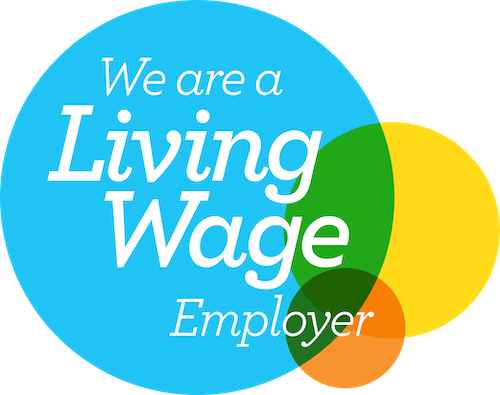The lowly contact page is a staple for any website. For us service-based businesses, it’s hella important as a main point of conversion. For online shops, it serves as an opportunity to reassure customers and help you to address the reason why they are not buying from you today.
I would say that, all too often, designing a website’s contact page is an afterthought – but I think that’s probably putting it mildly. I would bet that it’s more common that no thought goes into a contact page, apart from maybe “could someone use this to contact my business? Yep, done.”
Your contact page deserves better. It really can make a massive difference to your website’s power to convert customers, so here’s what to include in your contact page design.
1. Actual contact details for getting in touch with your business
Some people just ruddy hate forms, I used to be one of them (but then I turned 30 and now love a good data entry session). If your only method of contact is a form, you will probably be missing out on enquiries and questions from visitors who:
- Only have a quick thing to ask, and therefore a form is mental overkill
- Are getting in touch with many different businesses, and would rather copy & paste their enquiry into an email than try to make it match with your form
- Don’t want to contact you right now, but need to store your details for later and can’t ‘save’ your form to their trusty spreadsheet
- Have accessibility requirements, like using a screen reader, which is not compatible with your website’s form
Your website’s contact page design should include as many methods of contact as your are willing to be contacted by.
For some small businesses, it might not be practical to share a phone number, if for example, you have another job, or would be consistently unable to answer the phone at times when customers would call.
If you work from home, it’s totally, totally, TOTALLY understandable to not want to publish your home address on your business’ website, it wouldn’t be appropriate for you or for your customers.
Through Studio Cotton, I work with a few ecommerce businesses without a physical store, but with office or studio space. These businesses are often reluctant to add their office address to their contact page in case customers turn up trying to buy, but there’s a super easy solution to this: just write some text to explain this. Or, nab this paragraph that I have prepared for you, you’re welcome bbz:
The [insert business name here] team works tireless from our lovely studio, based [insert town/region here]. Our studio is not open to the public, but you can use the address below for [return orders/bespoke consultations by appointment only/visiting our open days or events].
At a minimum, your contact page should include two of the following:
- Working contact form
- Email address
- Phone number
- Physical address
- Postal address (if different to your physical address)
2. Anticipated & active social media links
I don’t really know when this happened. At some point in recent history it just became the norm to find social media details on a website’s contact page. I am sure many of us small business owners would prefer to be contacted using more conventional methods of professional communication like email, but it’s now good practice to include some social links on your contact page.
If your potential customer or collaborator is in need of your Instagram, Facebook, Twitter, YouTube or Pinterest presence, they might head straight for your contact page.
Make it easy AF for your customers to form a long-term relationship with your brand by including every active social media channel you use when you are designing your contact page.
3. The reasons why your visitor should get in touch with your business
Product questions, order support, project enquiries, exploratory calls, press pack, price list. Reassure visitors that they’re in the right place by literally typing out every reason why they should get in touch with your business.
Using specific language will not only consciously or subconsciously check the right box in the mind of your website visitor, but it will really help the search engine optimisation (SEO) of your contact page.
The words you use on your website are (unsurprisingly) the clearest indicator of the content and topic of your business. Google’s search algorithm analyses many different factors when choosing where to rank a website – but the written content is waaaaayyyyy up there on its list, because of its power as an indicator.
This should go for all areas of your website; try to be specific to your brand at every opportunity. Hundreds of thousands of business could have a contact page that reads “get in touch to talk about your next project”, but only mine could say “Want to discover how Studio Cotton can help your creative small business achieve new heights? Get in touch to talk branding, websites, marketing or to just have a natter over a lovely Bristolian latte.”.
Set expectations where you can. If you have a second or third job, and can only respond to enquiries on Thursdays and Fridays, write that down. It’s better to set your potential customer’s expectations at a level you can exceed, rather than disappoint.
4. Reasons not to get in touch via the contact details
Managing and answering your queries is a pretty time consuming, and often a frustrating or boring job. It’s even more frustrating and boring when you find yourself answering the same questions over and over.
Sure, you can definitely save heaps of time by preparing some canned responses in advance, but if you’re receiving a lot of the same questions from your website – well, your website has already failed a little bit by not answering them. Just like you probably don’t enjoy managing your messages, your customers really, really don’t like having to send you a message to gain some information and wait for your response, when they could otherwise find it via a few clicks.
As I type this article, we’re starting to ease off on some of the lockdown measures from the COVID-19 crisis. One of the effects from this pandemic is pretty universal packing and postage delays. That’s why it’s a good idea for all businesses to include a little reassuring message in their website’s contact page design, like;
“Thank you for your support and your patience during this tough time. We’re still processing and packing your products, but due to social distancing and delays with our delivery partners, orders can take an extra 5 working days to arrive. You should receive an email when your items have been dispatched.”
You can also include links to key pages that contain helpful information that could answer those repetitive questions. Pages like deliveries, returns, about, careers, or sustainability.
5. The city and country where your small business is based
I mentioned earlier that sharing your address isn’t appropriate for a home-based business, but that doesn’t mean you should hide your whereabouts completely. Sharing a rough geographic location like the town and country where your business is based, wins local customers without putting off those further afield.
Promoting your geographic location also makes your customers feel like your business is more legitimate. This is a weird side effect of ecommerce websites get better and better, and quicker to launch – as well as lovely small businesses having access to great sites, dodgy businesses and scammers have that same web design access too.
Even something as simple as your town, county or region gives the impression of traceability, and the comfort that if something does go wrong, there’s a lovely Geordie, Scouser or a Californian that they can contact.
A local focus is also great for SEO – Google is insanely biased towards local content because local businesses are more likely to solve problems than those further away. If my boiler breaks in Bedminster, it’s more likely that a plumber in Petty France can solve my problem, rather than one in proper France.
6. Contact page design
Your contact page might be the only part of your website a customer sees. Make it as lovely as your homepage. Make sure your branding, fonts, and colours are on point. Include images to emphasise and add personality, as long as they don’t distract from the main information.
No page on your website should be an afterthought, so make sure the design of your contact page is something that makes you proud.
7. Mailing list opt-in
Email marketing is the tits, that pish should be accessible from every gosh darn page.
And that’s about it. This blog post, 7 essential features for your contact page design that will make your business better, originally started as a one of our many bite-size advice posts on Instagram. Follow @studio.cotton for more super digestible marketing tips and tricks.























